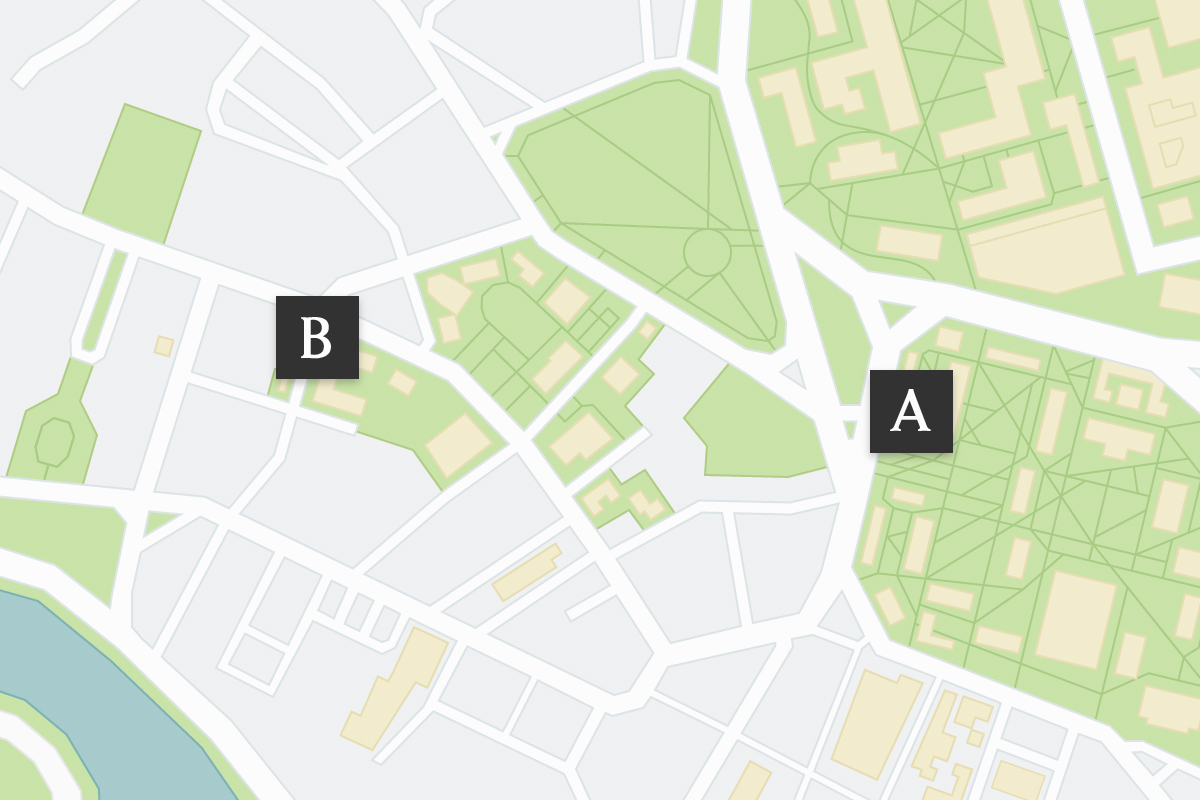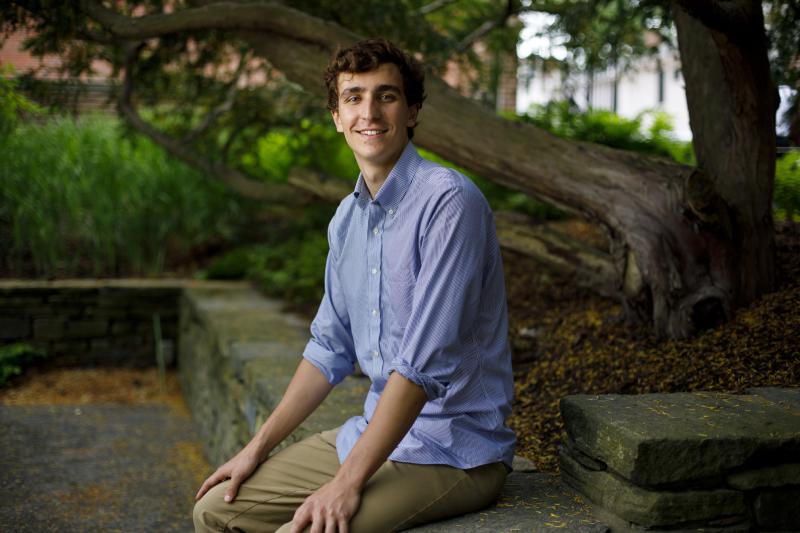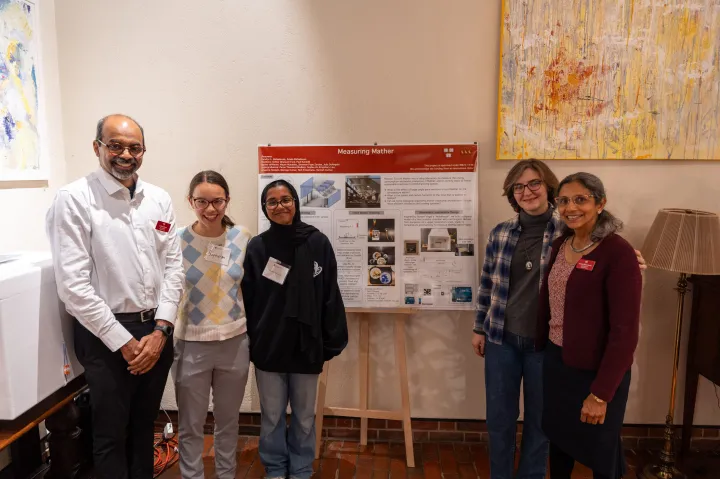
Sustainability Shines through Measure Mather
Mather House, one of Harvard’s undergraduate residential houses, is turning itself into a living laboratory for sustainability.
The initiative, called Measure Mather, brings together faculty, tutors, and students to track the House’s environmental footprint. Everything from food waste to air quality is analyzed, with the goal of empowering students to make informed choices about sustainability.
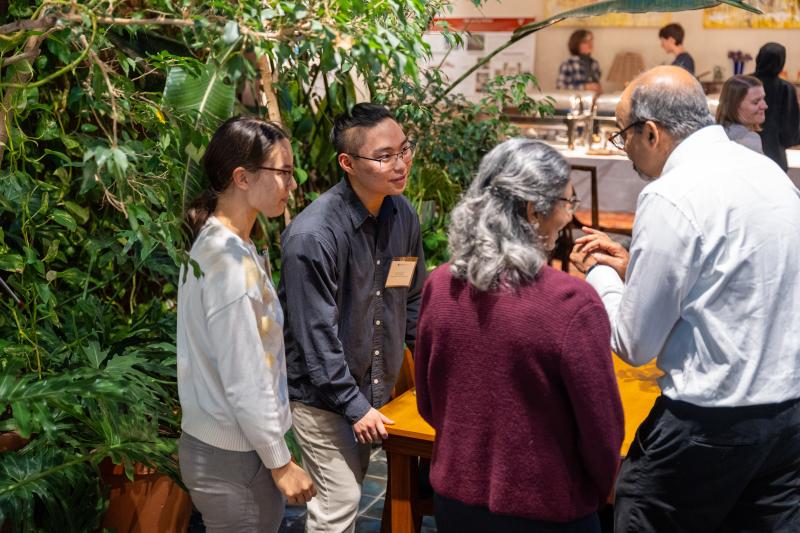
Sustainability: A Team Effort
Mather House Faculty Deans, L. "Maha" Mahadevan and Amala Mahadevan, describe the Measure Mather intiative and impact to get more students involved in campus sustainability efforts. Photo by Dustin Weyand ’28, courtesy of the Dean of Students Office.
A House-Wide Experiment
The project began nearly five years ago when Faculty Deans L. “Maha” Mahadevan, Professor of Physics, Applied Mathematics, and Organismic and Evolutionary Biology, and Dr. Amala Mahadevan, Senior Scientist at the Woods Hole Oceanographic Institution, asked a simple question: what could they do to support Mather’s student community? The answer, shaped through student surveys, was to nurture both the “inner world” of learning and the “outer world” of the environment.
“We felt that in the context of sustainability, students often didn’t feel they had much agency, since they are just one person among many on earth,” Mahadevan said. “But living in a House means your daily choices—what you eat, what you waste, how you use energy—add up in real and measurable ways. Measure Mather is about showing students that they have more influence than they might think, and then giving them the tools to take charge of that impact by thinking about the community that they live in and shape.”
With approval through Harvard’s IRB process, the House installed sensors in public spaces such as the dining hall and the multicultural room. Data collection is crucial, Mahadevan explained. “We can’t ask for changes to a historic building without evidence. Measurement comes first. It gives us the statistics we need to make the case for changes, such as renovations, consumption patterns, and other habits that will truly make a difference.”
For Mahadevan and the Mather team, Harvard’s Science and Engineering Complex (SEC) represents a place to compare with, and perhaps a path forward. “The SEC was built from the ground up with sustainability in mind, but it is not a residential space,” he said. “Mather, on the other hand, is an older, 55-year-old building that is residential. Can we still learn from SEC’s architectural strategies: better insulation, efficient lighting, and systems that respond dynamically to occupancy? We hope so,” Mahadevan said. By collecting concrete data, Measure Mather hopes to tailor upgrades to the historical House, and lay the groundwork for future institutional investments.
Sensors, Cameras, and Carbon Footprints
Paul Kaneelil, Mather House tutor and Postdoctoral Fellow at the Harvard John A. Paulson School Of Engineering And Applied Sciences (SEAS), oversees many of Measure Mather’s technical aspects. In describing the network of sensors that now track temperature, humidity, and carbon dioxide, he says early results have already revealed surprising fluctuations. “You’d think temperature inside a room wouldn’t vary that much, but we’re seeing very large differences depending on whether you sit near an old window or away from it.” Kaneelil and Perce Thaveesittikullarp '27, an undergraduate student in Mather House, also designed a food waste monitoring system (pictured below). A camera above the conveyor belt in the dining hall snaps photos of leftover food as trays pass by, uploading images to a shared drive for analysis. The long-term goal is to utilize machine learning to match wasted food with Harvard menus, enabling HUDS to enhance its ongoing sustainability initiatives. “This is about understanding the carbon footprint of the food we throw away so we can make smarter choices as a community,” Kaneelil emphasized.
Students at the Center
For Mather senior Sophie-An Kingsbury Lee '26, who studies Environmental Engineering and Earth and Planetary Sciences, the project is just as much about communication as data. She serves as the communications lead, writing newsletters, producing a short film, and helping students understand the meaning behind the numbers. Her focus is on turning measurement into action. For example, after noticing how often students grabbed paper cups or plastic cutlery near drink stations, the team collaborated with dining staff to make reusable bowls and silverware more convenient. “The Mather community is amazing,” Kingsbury Lee said. “Anything we want to happen, students, faculty deans, staff, and administrators are all on board. We’ve built a legacy here that I hope other Houses can take up too.”
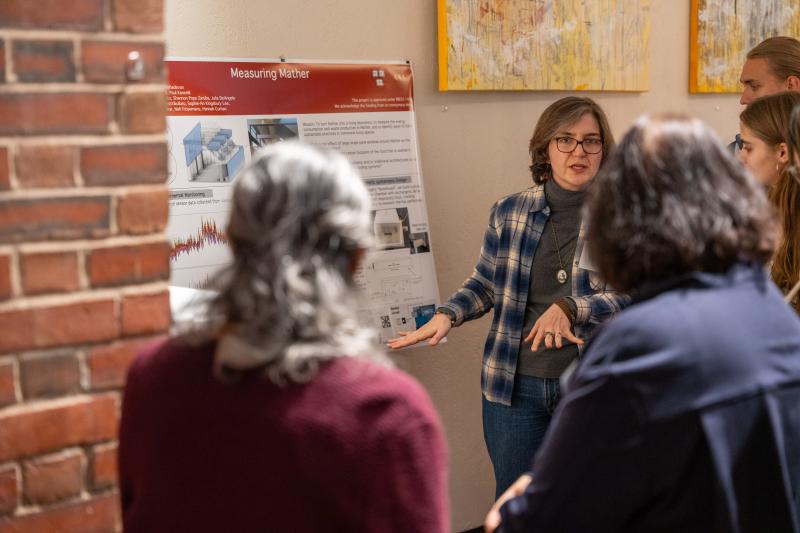
Measurement In Action
A Measure Mather team member explains the science behind the project to a group of attendees at the October 29 Mather Sustainability Social. Photo by Dustin Weyand ’28, courtesy of the Dean of Students Office.
Getting Involved
Every student can participate in Measure Mather, and student feedback is critical. The project has roles for those interested in coding sensor data, but also for students who want to create visual displays, lead workshops, or adjust their own sustainable behaviors in daily House life. “We are not alone,” Mahadevan said. “Mather is part of the Houses, Cambridge is part of many cities, and we all share one planet. We can never do it alone, but together, we can do better for the benefit of the world.”
On October 29, Mather hosted a Sustainability Social for students to learn more about Measure Mather, as well as other sustainability initiatives. “Deans Maha and Amala really create such a wonderful environment for students trying to make a difference, and we were able to experience that strong community during this event,” Luke Tan '28, noted. “It really inspires me to see students taking sustainability initiatives into their own hands. Harvard can often feel like such a large institution, but having encouragement and guidance from the local house community, like Mather, seems to be key to making students feel like they are the ones who can drive change for themselves.”
Read more about Harvard College's sustainability efforts:
Thesis Spotlight: Innovating for a Sustainable Tomorrow
Harvard's Action Camp for the Planet
